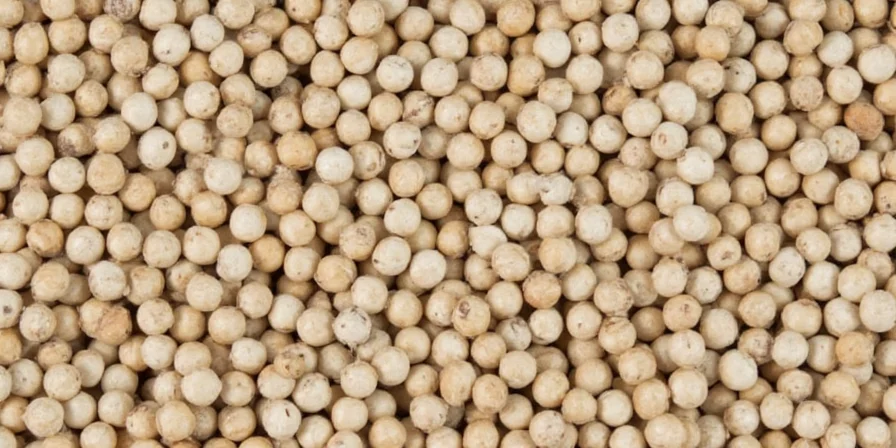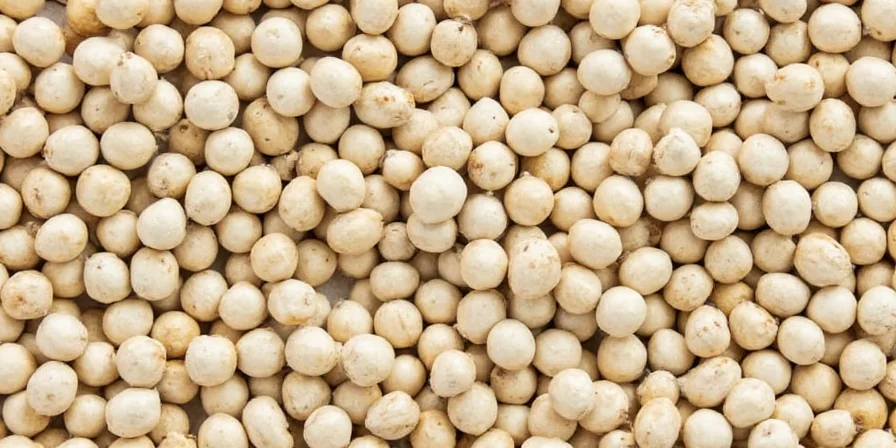Peppercorn Chronicles: The Surprising Origins of White Pepper & Why It’s the Spice Cabinet’s Best Kept Secret
Table of Contents
- Introduction: Black vs. White Pepper – Not Twins, Just Cousins
- Where Do White Peppercorns Come From? A Global Journey
- How White Pepper is Made: Rot, Rinse, Repeat?
- White Pepper in Global Cuisine – Why It’s the Secret Weapon of Chefs
- 5 Life-Saving Tips for Using White Peppercorns Like a Pro
- Buying Guide: Choosing Quality White Pepper (Without Getting Duped)
- Storage Secrets: How to Keep Your White Pepper Fresh as a Picked Pod
- Health Perks: Is White Pepper Good for You or Just Tasty?
- Conclusion: White Pepper Deserves More Than Just a Sprinkle
Introduction: Black vs. White Pepper – Not Twins, Just Cousins
If you thought black and white peppercorns were just color variations of the same spice, think again! They might come from the same plant—Piper nigrum—but their journeys are wildly different.

Black vs White Pepper: Same species, different vibes.
Let’s dive into where do white peppercorns come from, how they’re processed differently, and why you might want to swap out your black pepper grinder next time you cook.
Where Do White Peppercorns Come From? A Global Journey
White peppercorns begin their life as berries on the evergreen vine Piper nigrum, native to India’s Malabar Coast. But like most great stories, this one goes global:
| Region | Contribution to White Pepper Production | Unique Characteristics |
|---|---|---|
| India (Malabar Coast) | Historical birthplace; still major exporter | Earthy, bold flavor profile |
| Vietnam | Top global producer today | Milder, slightly floral notes |
| Brazil | Growing player in specialty white pepper | Fresh, clean finish |
| Indonesia (Java, Sumatra) | Known for aged white pepper varieties | Deep, complex flavors |
A world map highlighting major white pepper producing regions.
How White Pepper is Made: Rot, Rinse, Repeat?
The transformation from green berry to white peppercorn is less glamorous than it sounds. Here’s the unglamorous truth:
- Ripening: Berries are left to ripen fully (unlike black pepper, which is picked semi-ripe).
- Sunning: Berries are sun-dried for a few days.
- Soaking: Dried berries are soaked in water for several days to ferment and loosen the outer skin.
- Rubbing: Outer fruit layer is manually or mechanically removed, leaving the inner seed.
- Drying: Seeds are sun-dried again until they harden into the familiar white peppercorn.
From ripe berries to white seeds: the fermentation process explained.
White Pepper in Global Cuisine – Why It’s the Secret Weapon of Chefs
While black pepper dominates Western kitchens, white pepper has its own loyal fanbase across Asia and Europe. Here's why:
- Chinese soups: Used in broths and sauces to add heat without dark specks.
- French cuisine: Classic dishes like béchamel sauce use white pepper to maintain visual appeal.
- Vietnamese pho: Often toasted lightly before grinding to enhance nutty undertones.
- Cream-based dishes: Blends seamlessly without disrupting texture or color.
White pepper enhances both flavor and presentation in classic Vietnamese dishes.
5 Life-Saving Tips for Using White Peppercorns Like a Pro
You’ve got the jar, now let’s make the most of it:
- Toast Before Grinding: Lightly toast whole white peppercorns in a dry pan to unlock deeper flavor before grinding.
- Perfect for Creamy Dishes: Ideal when you want subtle heat without visible specks—think mashed potatoes, alfredo, or velouté.
- Pair With Garlic: Enhances garlicky richness—perfect for sautés, marinades, and roasted meats.
- Add at the End: To preserve aroma, add ground white pepper near the end of cooking.
- Make Your Own Blend: Mix with salt, lemon zest, or dried herbs for a custom seasoning blend.
Create custom blends with white pepper for unique culinary flair.
Buying Guide: Choosing Quality White Pepper (Without Getting Duped)
Not all white pepper is created equal. Here’s what to look for:
| Factor | High-Quality Indicator | Low-Quality Red Flag |
|---|---|---|
| Color | Ivory to light beige | Dull gray or yellowish tinge |
| Smell | Earthy, fresh, slightly woody | Stale, musty, or no aroma |
| Texture | Hard but not brittle | Soft, crumbly, or powdery |
| Origin | Labeled as Vietnam, Indonesia, or India | Unspecified “imported” |

Learn to spot high-quality white peppercorns like a pro.
Storage Secrets: How to Keep Your White Pepper Fresh as a Picked Pod
Proper storage can mean the difference between vibrant and lifeless spice:
- Whole vs Ground: Whole peppercorns retain freshness much longer—grind only as needed.
- Containers: Use airtight glass or metal containers. Avoid plastic if possible.
- Location: Store in a cool, dark place away from heat sources and moisture.
- Shelf Life: Whole white peppercorns last up to 3–4 years; ground version starts losing potency after about 6 months.
Keep your white pepper fresh and flavorful with these storage tips.
Health Perks: Is White Pepper Good for You or Just Tasty?
Yes! While not as studied as black pepper, white pepper still brings some health benefits to the table:
- Antioxidant Power: Contains compounds that help fight oxidative stress.
- Anti-Inflammatory: May aid in reducing inflammation when consumed regularly.
- Improves Digestion: Stimulates digestive enzymes naturally.
- May Aid Nutrient Absorption: Though less piperine than black pepper, still helps with bioavailability of certain nutrients.

White pepper isn’t just tasty—it’s also good for you!
Conclusion: White Pepper Deserves More Than Just a Sprinkle
So where do white peppercorns come from? From the lush vineyards of India to the bustling markets of Vietnam, they’ve traveled far to land in your spice rack. Now that you know the journey, the processing, and the flavor, it’s time to treat white pepper like the culinary gem it truly is.
Next time you're in the kitchen, give white pepper the spotlight. Whether it’s enhancing a creamy soup or adding depth to a traditional stew, white pepper is more than just the wallflower of the spice cabinet—it’s a flavor powerhouse waiting to shine.
Elevate your dishes with the subtle heat of white pepper.










 浙公网安备
33010002000092号
浙公网安备
33010002000092号 浙B2-20120091-4
浙B2-20120091-4